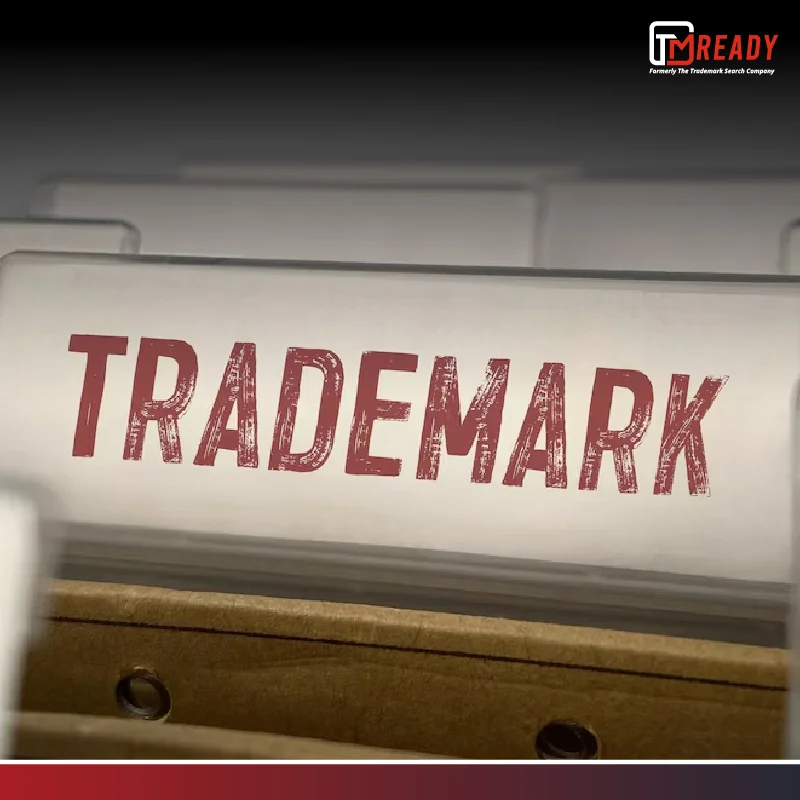According to a report released by World Intellectual Property Office (WIPO), a massive number of people around the world filed 13.4 million trademark applications in 2020. Even the Covid-19 pandemic and lockdowns seem to have no major impact on the rising interest in intellectual property. Out of all the intellectual property forms, a trademark has been of particular interest. But as the number of trademark filings goes up, the risk of trademark infringement and dilution in USA are also increasing at a rapid pace. The article discusses the concept of trademark dilution, how it is different from trademark infringement, the different ways a trademark gets dilution, and its interpretation in the modern market scenario. We will also cover the dilution laws and how to prevent trademark dilution in USA.
While many business and trademark owners have a fair idea about trademark infringement, trademark dilution is a comparatively lesser-known concept. But this does not mean that it happens in rare cases. Not only trademark dilution is quite common, but also it remains unidentified due to a lack of awareness about it. Trademark dilution is degrading to your brand’s reputation and has a high potential to steal your company from potential revenues. The article discusses the concept of trademark dilution, how it is different from trademark infringement, the different ways a trademark gets dilution, and its interpretation in the modern market scenario. We will also cover the dilution laws and how to prevent trademark dilution in USA.
Did You Know That You Can’t Trademark Some word? Read about Trademark Disclaimer
What do you mean by trademark dilution?
Trademark dilution is the unauthorized usage of a trademark that may weaken the distinctive quality of a famous trademark. The dilution of a trademark is the upper surface of the infringement concept as dilution harms or degrades the uniqueness of a famous trademark. The infringement and dilution of a trademark occur due to different reasons but have a common impact of harming the brand’s authenticity and reputation in the market. Trademark dilution is also known as tarnishment and free-riding in European Union Countries.
So, how to prevent trademark dilution in USA? One can initiate legal action under trademark dilution clauses under state as well as federal courts of the USA. However, there are 2 requirements for a trademark to be considered diluted:
- The original trademark (the trademark that is being diluted) should be famous. Being famous means that the mark should be a widely known public name, i.e., a high degree of recognition. Some examples of publicaly known famous marks would be GOOGLE, DISNEY, SONY, SAMSUNG, MICROSOFT, and APPLE.
- The impugned trademark’s usage (defendant’s mark) must blur or tarnish the original trademark’s value in the market.
Just 3 Steps and You Have A Perfect Business Name!! This is How
Can you prove dilution without infringement?
Trademark dilution and infringement are two different concepts. Yes, you can prove dilution without infringement because the grounds of dilution (blurring, tarnishment, and freeriding) are different from grounds of infringement (likelihood of confusion)
What is the difference between trademark infringement and dilution?
| Trademark Dilution | Trademark Infringement |
| In trademark dilution cases, the goods and services of the impugned trademark need not be similar. | The goods or services offered by the infringer are from a similar sector or geographical location. |
| Deciding criteria are: Dilution by blurringDilution by tarnishmentFree-Riding | Deciding Criteria are: Likelihood of confusion/consumer confusionGeographical area of operation of involved businessesSimilarity in target customer base |
| For example, a company using the name Mercedes for selling watches is trademark dilution as it will weaken the image of the original company. But it will not be regarded as trademark infringement as the sectors are different. | For example, if a company uses the same name and logo to sell the same product, suppose someone uses the name Mercedes for selling cars, it is a case of trademark infringement. |
What is a famous trademark?
To prove and prevent the dilution of a trademark in USA, you need to prove that the diluted mark is a famous one. Under the Federal Trademark Dilution Act of 1995, only famous marks have the protection against dilution. The courts consider the following points to determine whether the plaintiff’s mark is famous or not:
- The extent and usage duration of the trademark
- The extent and advertising duration of the mark
- The geographical extent to which the trademark has been used
- The degree of distinctiveness and uniqueness of the mark (via inherent or acquired distinctiveness)
- The degree of recognition of the mark
- The method used to market and distribute the mark
- The use of a trademark by third parties
- Whether the mark has been registered or not
Thus, a trademark should have a decent degree of public identification for it to be considered ‘famous’.
Are You a Business Owner or Entrepreneur in USA? Here is an A to Z Guide on Trademarks for you
How Trademark Dilution Occurs?
By Trademark Blurring
When a third party uses a famous mark’s identity without permission, it’s the case of dilution by blurring in USA. The third-party usage of a famous trademark decreases the likelihood of the trademark working as a unique identifier of the owner’s product. Thus, the snatching away of the famous mark’s recognition hampers its selling capacity. Trademark blurring can happen by using deceptively identical as well as similar trademarks. A few examples of dilution by blurring are Aspirin, Rolls-Royce, Escalator, and Cellophane. As the third-party marks of these famous trademarks are widespread in the market, it leads to obscurity in trademark rights. Moreover, the prevention of trademark from dilution in USA also gets tough.
Trademark Dilution by Blurring in the USA
The key factors that determine Blurring under FTDA, 1995 are:
- The degree of similarity between an impugned party’s trademark or name and the famous mark
- The level of the famous trademark’s distinctiveness
- The extent of involvement of the famous trademark’s owner in substantially explicit use of the mark
- The level of recognition and degree of distinctiveness of the famous mark
- If the impugned party intended to associate their mark with the famous mark
- Whether or not there is any actual association between the impugned party’s mark and the famous mark.
By Trademark Tarnishment
When the impugned mark connects their inferior quality goods or services with the famous mark, a tarnishment of the famous mark takes place. This is because the third part’s mark represents the original mark in harming the original products’ reputation in the public eye. In Asian countries such as India, China, Pakistan, etc., tarnishment is quite common. The unscrupulous manufacturers tamper with the original name and mark and sell the products with inferior quality at a lower cost. This severely impacts the original brand’s revenues, market image, and equity. A common example of dilution by tarnishment is Adidas.
Dilution by freeriding
The freeriding is when the impugned trademark owners try to make a profit from the positive association between the original and their mark. In Many countries, including EU nations, freeriding or parasitic exploitation is a criminal offense. A few examples of trademark dilution due to freeriding are Red Bull & the Bulldog, L’Oréal & Bellure, etc.
Types of Marks on the Level of Dilution
Based on the level of dilution, 5 types of trademarks exist:
1. Generic Trademark
These marks are generic or synonymous with a specific class of product or service. The linkage between the term and the specific class strengthens because of its popularity and uniqueness. Such trademarks are not registrable until they have achieved a degree of distinctiveness by constant use. Thus, using generic trademarks leads to blurred trademark dilution. A few examples are Apple (consumer electronics), cello tape (adhesive tape), Tupperware (home products), and Band-Aid (adhesive bandages).
2. Descriptive Trademark
Descriptive marks describe the features of a product or service to which the mark pertains, more like using an adjective. USPTO does not allow registration of descriptive marks on the absolute grounds of refusal.
3. Suggestive Trademark
As the name suggests, these marks suggest or refer to the goods or services indirectly. Thus, suggestive trademarks make the consumers make use of their creativity.
4. Arbitrary Trademark/Fanciful Trademark
They are known as arbitrary because the words used in such marks have no link with the offered products or services under them. Thus, arbitrary trademarks are the complete opposite of descriptive marks. Moreover, arbitrary marks are registrable by USPTO, unlike descriptive trademarks. Thus, someone who registers a fanciful mark will enjoy the trademark rights.
5. Coined Trademark/Invented Trademark
These trademarks are invented words with no resemblance to any dictionary word. They have no meaning and are meant to create a positive linkage of the trademark with the product/service on the offerings. Coined trademarks have the highest chances of registration.
How do you prove trademark dilution?
In order to prevent your trademark from dilution in USA, you must prove that the original mark has been diluted. A famous trademark owner is qualified to an injunction against the third party using a mark or trade name that can cause dilution of the famous mark. The injunction is possible despite the presence or absence of actual or likely confusion, of competition, or of actual economic injury.
You can prove trademark dilution by demonstrating that the impugned mark is blurring, tarnishing, or freeriding the original mark.
What does the Federal Trademark Dilution Act of 1995 Require?
Under the Federal Trademark Dilution Act of 1995, the trademark owner can act in legal capacity to safeguard his/her trademark from:
- Unauthorized use
- Someone trading on the mark’s goodwill
- Dilution or weakening the distinguished identity of trademarks.
The Federal Trademark Dilution Act, 1995 covers both likely dilutions as well as actual dilution to identify and eliminate risks beforehand. So, if someone owns a famous trademark, then he can legally initiate an injunction against the impugned party diluting the original trademark’s distinctiveness. The entitlement to an injunction is available whether or not there is a likelihood of confusion or economic loss.
Under FTDA, 5 factors can act as evidence of fame of the mark in connection:
- Duration
- Volume
- The geographic extent of marketing and advertising
- The geographic reach of products offered
- The extent of real recognition
In addition, the court will consider a dilution claim valid only if the mark under consideration was well-known before the defendant initiated its unauthorized use.
The Trademark Dilution Revision Act, 2006
TDRA revised the Lanham Act by eliminating the need to show actual confusion, competition, or other treble damages. Moreover, TDRA, 2006 enables the famous mark’s owner to seek additional civil action if the impugned party:
- Ist used the trade name or trademark in the market after 2006
- Intentionally traded on the fame of the mark
- Intentionally traded to weaken or harm the distinctiveness of the recognized mark
What are the Exceptions under Federal Trademark Dilution Act, 1995?
In some cases, using famous marks does not come under the dilution provisions of FDRA. The reason being, the fair use of the original mark should be allowed. The fair use covers:
- Non-commercial use of the mark
- Using the famous mark for news commentary, anchoring or reporting
- Detecting, parodying, criticizing, or commenting on the owner or the products or services offered under the mark.
- Using the mark in a way other than as a designation of source for the goods or services for marketing that allows customer base to compare goods or services.
More Related Articles You Will Love
This is Why You Need Industrial Designs More Than You Think





